| |
|
| |
|
| Set in the 19th
Century terraces just to the west of the
town centre, near to the famous Greene
King brewery, sits the pleasing church of
St Peter. It was built as a mission
outstation of the vast church of St Mary,
and until recently still had a sign
saying 'St Peter's District Church'
outside. When I revisited in September
2017, the nice lady on duty inside told
me that it had been built for the poor
area of the parish, so that the presence
of the unwashed wouldn't offend the
well-heeled congregation of St Mary, a
not uncommon arrangement in urban
parishes of the mid-century. St Peter is a surprisingly
large church, typical yellow banded brick
and Suffolk flint of the 1850s, with a
tower that serves as a south porch in the
Ipswich manner, surmounted by a sturdy
spire which perhaps would be more
familiar on an Essex church.
The architect was
John Hakewill, brother of the more famous
Edward. John's major moment in Suffolk is
the rebuilding of Thurston, but that is
in a thudding mock-Perp style, while here
is something more thoughtful. St Peter's
construction coincided with the urban
burial acts of the 1850s, so the wide
grass area around the church can never
have been used for burials. At one time
it formed the playing fields for the
adjacent St Mary's School, but this has
now closed.
|
|
| The interior has
undergone a series of substantial
reorderings and makeovers in the 150-odd
years of its life, the most recent in the
first decade of the 21st Century, but
surviving highlights include a
surprisingly good Hugh Easton Window of
the 1950s depicting the Annunciation in
front of St Edmundsbury Abbey and the
Norman bell tower. The east window is an early
20th Century job by Clayton & Bell,
installed when the church underwent its
ritualist makeover of the time, the
previous decalogue and Creed boards
relegated to the back of the church,
leaving only those painted to the wall in
1856 which they had replaced. The reredos
that accompanied the new east window went
in the 1970s, and thirty years later the
stone screen wall to the chancel was
removed and the chancel raised and
cleared of furnishings, not without
controversy and the complaints of the
Victorian Society. But the overall effect
now is of a decent, well-used space,
seemly and fitting for Anglican worship,
a building which has kept up with the
times.
This church is
invariably locked, but the exterior alone
is worth a look, a quiet and perhaps a
surprising Victorian moment in a town
full of surprises, lots of interesting
areas, fascinating churches, and the feel
of a town far larger and more important
than it is.
|
|
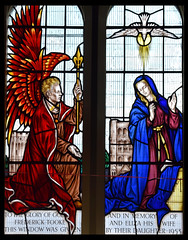 |
|
|
|
Simon Knott, September 2017
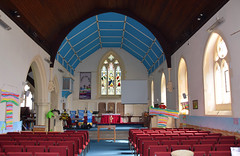  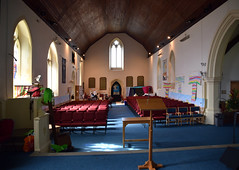
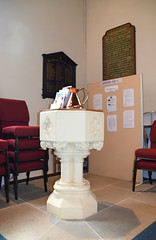   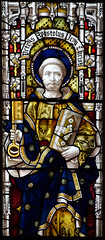  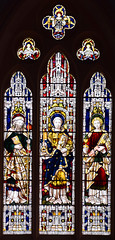 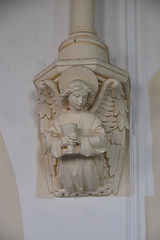
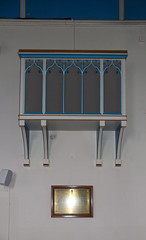 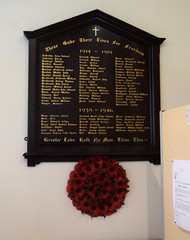 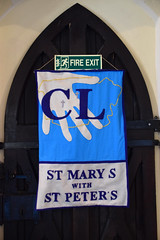
|
|
|

